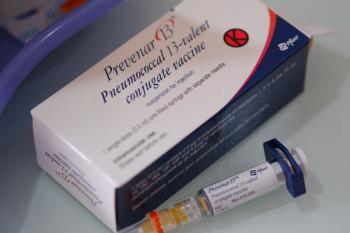
American Academy of Pediatrics Releases Vaccination Updates and Recommendations
The American Academy of Pediatrics (AAP) has updated its prevention and treatment recommendations, entitled Recommendations for Prevention and Control of Influenza in Children, for the 2019-20 influenza season. The guidelines include 7 main updates, while continuing to urge annual vaccination for patients 6 months and older.
Updates to the document included the following:
- Inactivated influenza vaccine (IIV) and live attenuated vaccine (LAIV) are options for children.
- Patients 6 months and older can receive any licensed available vaccine that is appropriate for their age and health status, with no preference.
- The A(H1N1)pdm09 and A(H3N2) components of the 2019-20 influenza vaccines are new this season, whereas the B strains are unchanged from last season.
- Children 6 months old through 8 years of age who are receiving the flu vaccine for the first time — or who received only one dose before July 1, 2019 — should receive two doses of the influenza vaccine.
- Influenza vaccines should be offered as soon as they are available. Children needing one or two doses of vaccine ideally should be vaccinated by the end of October.
- A new antiviral medication has been licensed for treatment of influenza in children, yet treatment and prophylaxis recommendations are unchanged
The report also indicated that the FDA has approved new formulations of licensed, inactivated flu vaccines with a volume of 0.5 mL per dose for children 6 to 36 months of age. Children 6 to 35 months of age may receive either the 0.25 mL or 0.5 mL dose of IIV, and children 36 months of age and older should continue to receive a 0.5 mL dose.
Furthermore, all pediatric influenza vaccines available this season are quadrivalent vaccines; however, the age indication for some of them has been expanded. There are 4 egg-based quadrivalent IIVs licensed by the FDA for children aged 6 months and older; one cell-based quadrivalent IIV for children 4 years and older; and 1 quadrivalent LAIV for children 2 years and older who are otherwise healthy.
The AAP document states that pregnant women may receive IIV at any time during pregnancy to protect themselves and their infants, who benefit from the transplacental transfer of antibodies. Postpartum women not vaccinated during pregnancy are encouraged to receive influenza vaccine before hospital discharge. Additionally, influenza vaccination during breastfeeding is safe for mothers and their infants, according to the AAP.
Any hospitalized child with suspected or confirmed influenza, any child (inpatient or outpatient) with severe, complicated or progressive illness attributable to influenza, and any child with influenza infection of any severity at high risk of complications of influenza are to be offered antiviral treatment as early as possible, regardless of influenza status.
The document advises offering antiviral treatment to these individuals:
- Any previously healthy, symptomatic outpatient not at high risk for flu complications with confirmed or suspected influenza — on the basis of clinical judgment — if treatment can be initiated within 48 hours of illness onset.
- Children with suspected or confirmed influenza whose siblings or household contacts are younger than 6 months or who belong to a high-risk group that predisposes them to complications of influenza.
The 2018-19 influenza season was moderately severe and the longest-lasting U.S. influenza season in the past decade, at 21 consecutive weeks. Influenza A (H1N1) viruses predominated from October to mid-February and drifted strains of influenza A (H3N2) viruses from February to May.
There were 116 laboratory-confirmed pediatric deaths (median age 6 years) in the previous influenza season. Among the 104 children with known medical history, nearly half of the deaths occurred in previously healthy patients. Most had not been vaccinated against influenza.
Reference
Munoz, Flor. Updated AAP flu policy offers more options this year. AAP News website. Published September 2, 2019.
Newsletter
Pharmacy practice is always changing. Stay ahead of the curve with the Drug Topics newsletter and get the latest drug information, industry trends, and patient care tips.





























































































































